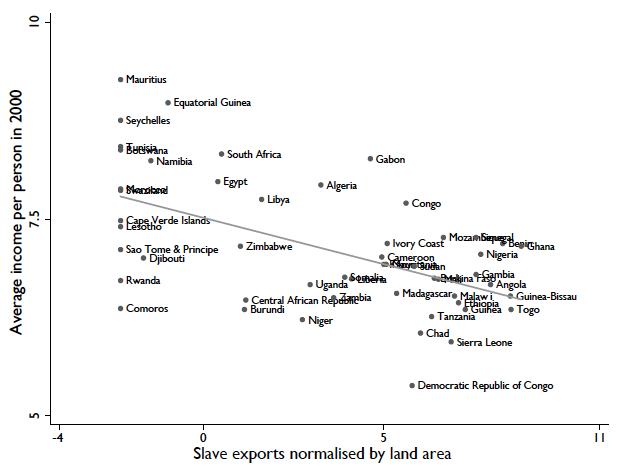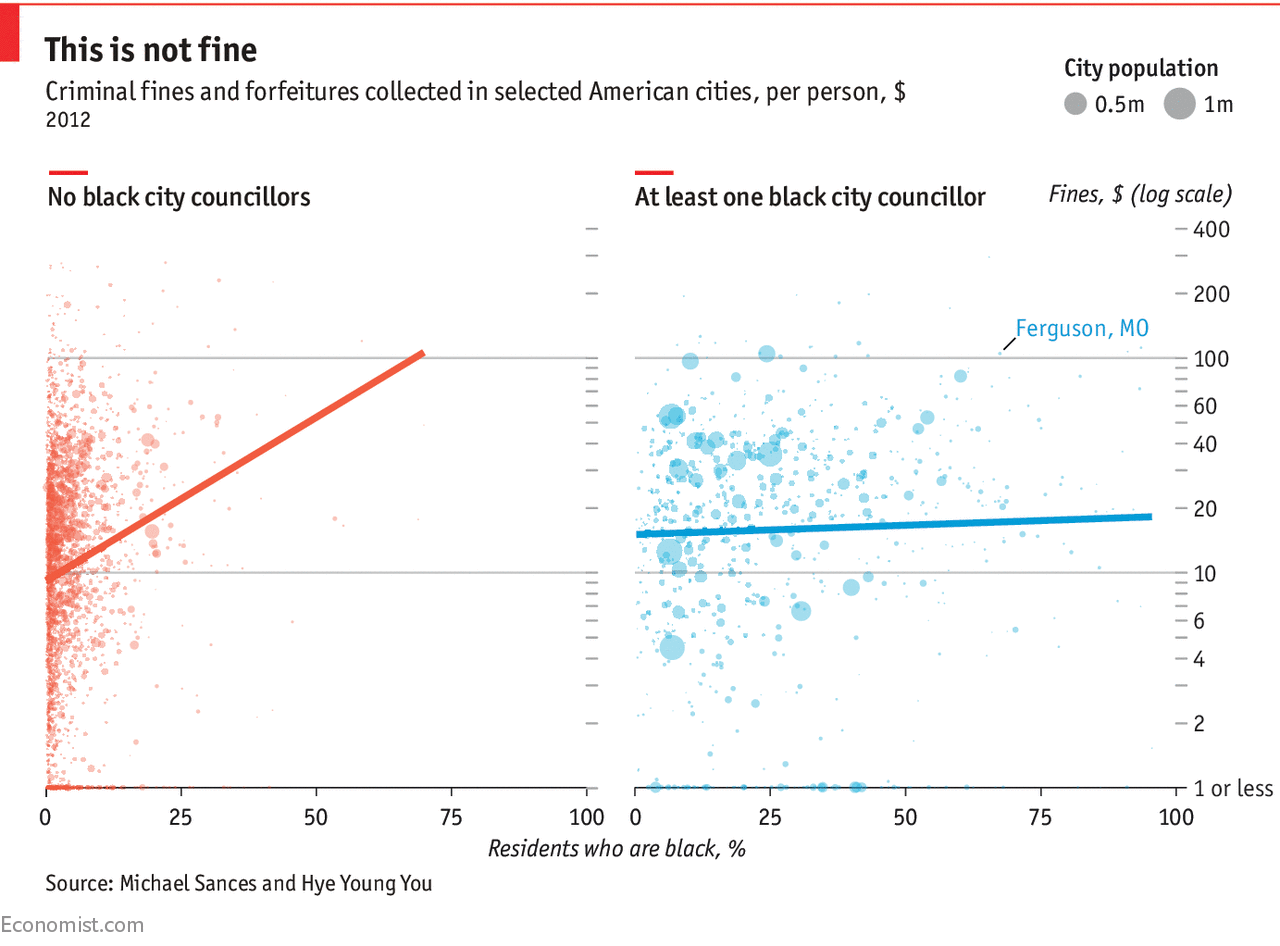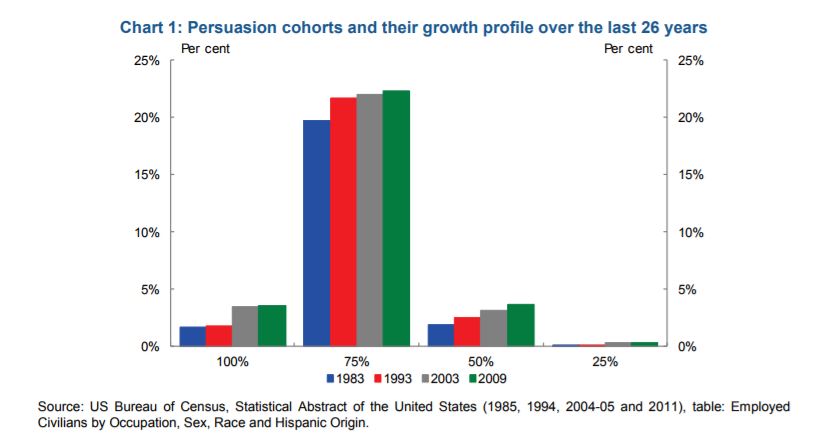According to economist Nathan Nunn, the African slave trade (unsurprisingly) had numerous negative long-term effects, economically, socially and culturally. He writes,
An empirical literature has emerged that aims to supplement these historical accounts with quantitative estimates of the long-run impact of Africa’s slave trades. The first paper that attempted to provide such estimates was Nunn (2008). In the study, I undertook an empirical test, with the following logic. If the slave trades are partly responsible for Africa’s current underdevelopment, then, looking across different parts of Africa, one should observe that the areas that are the poorest today should also be the areas from which the largest number of slaves were taken in the past.
To undertake this study, I had to first construct estimates of the number of slaves taken from each country in Africa during the slave trades (i.e. between 1400 and 1900).
These estimates were constructed by combining data on the number of slaves shipped from each African port or region with data from historical documents that reported the ethnicity of over 106,000 slaves taken from Africa. Figure 1 provides an image showing a typical page from these historical documents. The documents shown are slave manumission records from Zanzibar. Each row reports information for one slave, including his/her name, ethnicity, age, and so on.
After constructing the estimates and connecting these with measures of modern day economic development, I found that, indeed, the countries from which the most slaves had been taken (taking into account differences in country size) were today the poorest in Africa. This can be seen in Figure 2, which is taken from Nunn (2008). It shows the relationship between the number of slaves taken between 1400 and 1900 and average real per capita GDP measured in 2000. As the figure clearly shows, the relationship is extremely strong. Furthermore, the relationship remains robust when many other key determinants of economic development are taken into account…According to the estimates from Nunn (2008), if the slave trades had not occurred, then 72% of the average income gap between Africa and the rest of the world would not exist today, and 99% of the income gap between Africa and other developing countries would not exist. In other words, had the slave trades not occurred, Africa would not be the most underdeveloped region of the world and it would have a similar level of development to Latin America or Asia.

“In a series of studies,” Nunn continues,
Whatley and Gillezeau (2011) and Whatley (2014) combine slave shipping records with ethnographic data and estimate the relationship between slave shipments and institutional quality and ethnic diversity in the locations close to the ports of shipment. Their analysis, consistent with Nunn (2008) and Green (2013), indicates that the slave trades did result in greater ethnic fractionalisation. In addition, their analysis also shows that the slave trades resulted in a deterioration of local ethnic institutions, measured in the late pre-colonial period.
Another subsequent study, undertaken by Nunn and Wantchekon (2011) asks whether the slave trades resulted in a deterioration of trust…In our study, Wantchekon and I extended the data construction efforts in Nunn (2008) and constructed estimates of the number of slaves taken from each ethnic group in Africa (rather than country). The ethnicity level estimates are displayed visually in Figure 3. The analysis combined the ethnicity-level slave export estimates with fine-grained household survey data, which reports individuals’ trust of those around them, whether neighbours, relatives, local governments, co-ethnics, or those from other ethnicities. The study documented a strong negative relationship between the intensity of the slave trade among one’s ethnic ancestors and an individual’s trust in others today.
The study then attempted to distinguish between the two most likely channels through which the slave trades could have adversely affected trust. One is that the slave trades made individuals and their descendants inherently less trusting. That is, it created a culture of distrust. In the insecure environment of the slave trade, where it was common to experience the betrayal of others, even friends and family, greater distrust may have developed, which could persist over generations even after the end of the slave trade.
Another possibility is that the slave trades may have resulted in a long-term deterioration of legal and political institutions, which are then less able to enforce good behaviour among citizens, and as a result people trust each other less today.
The study undertook a number of different statistical tests to identify the presence and strength of the two channels. They found that each of the tests generated the same answer: both channels are present. The slave trades negatively affected domestic institutions and governance, which results in less trust today. In addition, the slave trade also directly reduced the extent to which individuals were inherently trusting of others. We also found that, quantitatively, the second channel is twice as large as the first channel.
Guess what? The slave trade likely boosted the practice of polygyny in West Africa:
This is due to the fact that it was primarily males who were captured and shipped to the Americas, resulting in a shortage of men and skewed sex ratios within many parts of Africa. Interestingly, Dalton and Leung (2014) found that there is no evidence of such an impact for the Indian Ocean slave trade, where there was not a strong preference for male slaves. This has led the authors to conclude that Africa’s history of the slave trades is the primary explanation for why today polygyny is much more prevalent in West Africa than in East Africa.
Nunn concludes,
Although research understanding the long-term impacts of Africa’s slave trades is still in progress, the evidence accumulated up to this point suggests that this historic event played an important part in the shaping of the continent, in terms of not only economic outcomes, but cultural and social outcomes as well. The evidence suggests that it has affected a wide range of important outcomes, including economic prosperity, ethnic diversity, institutional quality, the prevalence of conflict, the prevalence of HIV, trust levels, female labour force participation rates, and the practice of polygyny. Thus, the slave trades appear to have played an important role in shaping the fabric of African society today.


 So says a
So says a 
 As mentioned
As mentioned 

 I’m excited to announce that the
I’m excited to announce that the